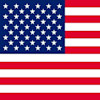Arthur Ashe, Jr.
Class of 1985 Hall of Famer ›

By the age of seven, Arthur Robert Ashe was already learning tennis. His first coach was Ronald Charity. In 1953, Ashe won the boys 12-and-under division of the ATA National Championships. Acknowledging his skill and dedication, Charity recommended Ashe to Dr. Robert Walter Johnson—the coach of Althea Gibson—that same year. Dr. Johnson coached and mentored Ashe for the rest of his life.
In 1960, at age 17, Ashe won the men’s singles division of the ATA National Championships, as well as the 18-and-under title. Ashe’s talent resulted in the first feature on him in Sports Illustrated as a “Face in the Crowd” in the December 12, 1960, issue. Ashe won the USLTA Interscholastic Championships in Charlottesville, Virginia the following year.
After graduating from his St. Louis, Missouri high school as the valedictorian, he was offered a full scholarship to attend the University of California, Los Angeles (UCLA). In 1963, Ashe was named to the U.S. Davis Cup team—the first Black player to be chosen for this opportunity. He played on the team until 1970, from 1975-1976, and in 1978.
In 1965, Ashe won the National Intercollegiate Singles Championship and won the Doubles Championship with teammate Ian Crookenden. He graduated from UCLA the following year with a business administration degree. After his graduation, Ashe served in the U.S. Army, at the rank of Lieutenant, for two years while continuing to play tennis.
In 1968, Ashe won the inaugural US Open, becoming the first Black man to win the U.S. National Singles Championship. That same year, Ashe began giving back to the tennis community. He, Charlie Pasarell, and Sheridan Snyder founded the National Junior Tennis League (NJTL), which aimed to provide children with access to tennis and academic support. Ashe also became an activist against Apartheid in South Africa that year when his travel visa to compete in the South African Open was denied because of his race.
In 1970, Ashe won his second of three Grand Slam singles titles at the Australian Open. In 1972, Ashe helped in the formation of the Association of Tennis Professionals (ATP) in order to give male players more control over their destiny with the growing popularity of tennis. He became the ATP’s president in 1974. Ashe’s success continued in 1975 when he won Wimbledon, defeating defending champion Jimmy Connors in the finals. Ashe became the No. 1 male tennis player in the world that year according to many experts.
In 1980, Ashe retired from professional play due to heart complications. His career ended with 51 titles and 818 wins. However, Ashe’s involvement with the sport continued off the court. He was the captain of the U.S. Davis Cup Team from 1981-1985. In addition, Ashe became a writer for magazines including Tennis, as well as a commentator for ABC Sports.
Apart from tennis, Ashe continued his activism. He was the American Heart Association’s national chairman in 1981. In 1983, Ashe co-founded Artists and Athletes Against Apartheid with Harry Belafonte. He saw the political changes in South Africa due to his efforts in 1991 as a member of a delegation that oversaw the country’s movement toward integration. Ashe also worked to educate others on his experience as a Black athlete through the publishing of his book, A Hard Road to Glory, in 1988. After announcing his AIDS diagnosis, he founded the Arthur Ashe Foundation for the Defeat of AIDS. Ashe gave back to minorities through organizations such as the Arthur Ashe Institute for Urban Health, the ABC Cities Tennis Program, and the Safe Passage Foundation.
Ashe passed away in 1993. He was recognized for his talent and activism throughout his life. Among the awards and recognitions, he was inducted into the International Tennis Hall of Fame in 1985. Sports Illustrated recognized Ashe as the Sportsman of the Year in 1992. He was awarded the Presidential Medal of Freedom the following year. Arthur Ashe Stadium was named in his honor at the USTA Billie Jean King National Tennis Center in 1997. He was an inductee into the Black Tennis Hall of Fame in 2008. In 2009, Ashe was inducted into the US Open Court of Champions. He also earned honorary degrees from many universities, including Yale and Princeton.
Comments
The initial launch of Breaking Boundaries included 95 individuals representing 25 nations. The exhibit continues to expand with many more inspiring stories. Fans are encouraged to submit their own suggestions of athletes and contributors for inclusion through the form below.











